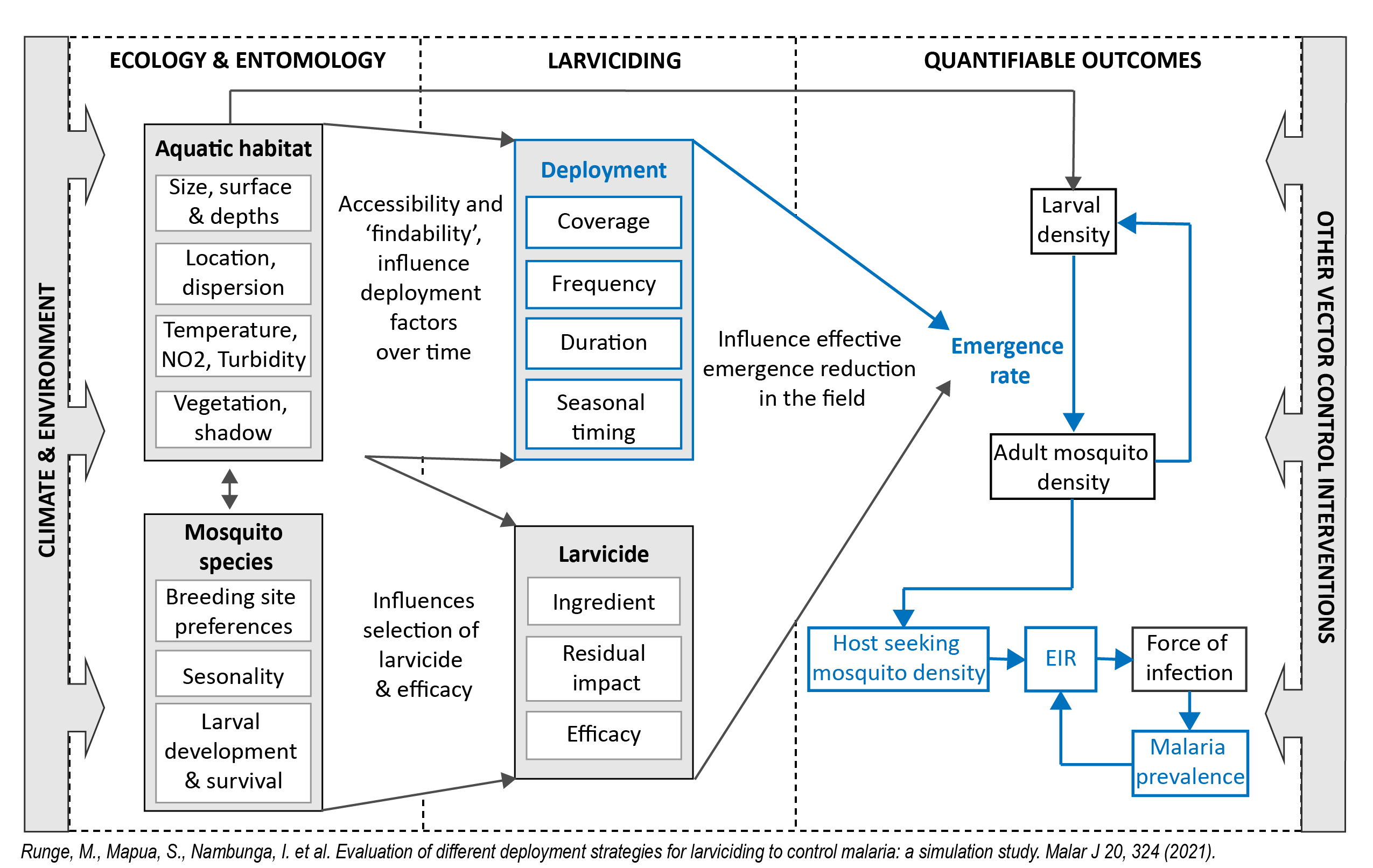Modelling larviciding deployment strategies
The simulation modeling of larviciding in Tanzania conducted for my main PhD research led to the question on how to model larviciding effectiveness? What coverage and what effect sizes to assume? The literature search revealed high variation of the impact of the intervention, depending on what larvicides were used and how these were deployed, as well as what outcome measures and timeframes were looked at. The indepth literature search and explorative models of larviciding impact for different deployment assumptions became its own project. In this context, a short research stay at the Ifakara Health Institute, Kilombero Tanzania, for almost three months, allowed me to learn more about Anopheles breeding sites. The work led to two poster presentations () and one publication.
Evaluation of different deployment strategies for larviciding to control malaria: a simulation study Modelling the impact of different larviciding deployment regimens to inform strategic planning Modelling the role of An.funestus in a setting where insecticide treated nets are already widely used but malaria transmission persists

